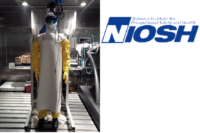According to Bersin by Deloitte, a leading research and advisory services firm, talent development is the second biggest challenge facing HR executives at organizations today. Bersin estimates companies spend more than $130 billion per year on employee development, with leadership development taking up the single largest area of spending.
According to the article, "The Secrets of Successful, Fast-Growing Businesses Today--and Plans for Tomorrow", in the September, 2016 issue of Inc. Magazine, 61 percent of the 2016 Inc 500 CEOs and founders prefer to develop employees by providing outside training. However, only 28 percent have a formal leadership development program.
While effective training and development is an issue for all employees, the issue is magnified among the Millennial workforce.
Seventy-one percent of Millennials who are likely to leave an organization in two years are dissatisfied with how their leadership skills are being developed. Sixty-nine percent of Millennials aspire to be leaders in the next five years and 60 percent of Millennials want training to develop their leadership skills.
Company perks, recruiting, customer service, and marketing are evolving to reach Millennials, so why is company training so far behind?
With 10,000 Baby Boomers retiring every day and a devastating lack of professional development for the generation who will replace the retiring leaders, it's no surprise that 89 percent of executives rate the need to strengthen, reengineer, and improve organizational leadership as an important priority.
The Solution for Training Millennials
Because they grew up with ubiquitous connectivity and evolving mobile technology, Millennials think and act differently. They approach problems fundamentally differently thus they require an evolved learning approach.
Microlearning can satisfy the learning expectations and preferences of Millennials. Microlearning provides training in small learning units and short-term learning activities delivered in a convenient and accessible manner. Content is distributed in "microscopic" learning bursts that are typically 2-15 minutes in length.
A powerful example of microlearning is 21Mill. 21Mill is an online microlearning platform built to help Millennials succeed in the workplace. 21Mill's training consists of twenty-one 10-15 minute micro modules centered around Millennial-specific training topics such as Developing a Strong Work Ethic, Overcoming Entitlement, Putting Down the Device, and more.
21Mill leverages microlearning to deliver on-demand rich media content via desktop or a mobile device. 21Mill takes it one step further by offering a blended approach (online and offline) to training where learners execute their learning through real-world assignments; all the while tracking their accomplishments and receiving support from 21Mill professionals.
6 Elements Needed to Deliver Training that Transforms Millennials
1. Brief and Beautiful
There is more competing for the time and attention of the emerging workforce than ever before. The media Millennials consume is bite-sized thus the training they are likely to consume has to be brief and succinct. Millennials also have a high expectation for technology to be simple, intuitive, and beautifully designed. Millennial training has to be beautiful. If the training content doesn't appear to mirror what Millennials would consume on a regular basis, they will be less likely to engage and retain the information.
Microlearning requires a shorter attention span so there is less cognitive load on learners and information is easier to absorb, retain, and recall. Microlearning matches human brain processing capabilities (especially Millennials) which makes it a fit for today's fast-paced and hyperconnected workplace.
2. Agile and Accessible
The 21st-century employee is untethered. They are remote workers, bringing their own device or applications to work and finding new ways to execute work and structure their day. Training must be digitally native and mobile in order to be effective for the next generation of learners. It has to be agile and accessible to fit into the active lives of Millennial employees.
Microlearning delivers training in short intervals where learners can easily insert the training in their day to day lives. How and when Millennials learn is more important than what they learn because the "what" won't matter if they never have the time or if accessing the training is over-complicated.
3. Instant and Intelligent
Receiving a notification from Google Maps that traffic is heavy before starting your commute is informative and helpful. Information is being delivered instantly and intelligently. Why can't training take a similar form where you receive an intelligent notification about powerful public speaking tips instantly on your phone while walking to a meeting where you'll be presenting to the team.
Millennials will turn to their smartphone to find just-in-time answers to unexpected problems. Information and learning is being accessed much differently today than in years past. Deploying intelligent learning via quick how-to articles, videos, or interactive infographics where learners can pull down the content for instant application makes microlearning ideal for Millennial training.
4. Collaborative and Communal
A majority of workplace learning happens via on-the-job interactions with teammates, managers, and in-house subject matter experts. Creating communities where Millennials can learn from experts, managers, and their peers and also contribute their own experience or expertise is impactful and empowering.
When microlearning offers collaborative technology and a communal environment it helps to build relationships, diminish silos, shrink geographies, enhance personal influence, and promote sharing.
5. Relevant and Relatable
The accelerated change happening at work and in business means everyone needs to commit to continuous learning. This also means that training has to be hyper-relevant to the specific and evolving challenges Millennials face at work. If the content isn't relevant and relatable for the learner, retention, and recall of the information will suffer.
The microscopic nature of microlearning content allows for quick creation of content and fast consumption by the learner. Creating training that addresses a relevant need and provides a solution or applications that are relatable for the learner is key for engagement.
6. Blend and Bind
For the digitally dependent Millennial generation, it's imperative that their training merge digital with real-world activities. Offline, in-person, or classroom training remains impactful and transformational in today's digital age. A blended approach to training binds one's learning.
Microlearning platforms that prompt, encourage, and reward Millennial learners for real-world interaction and application are extremely effective for binding the learning.
Source: www.inc.com







